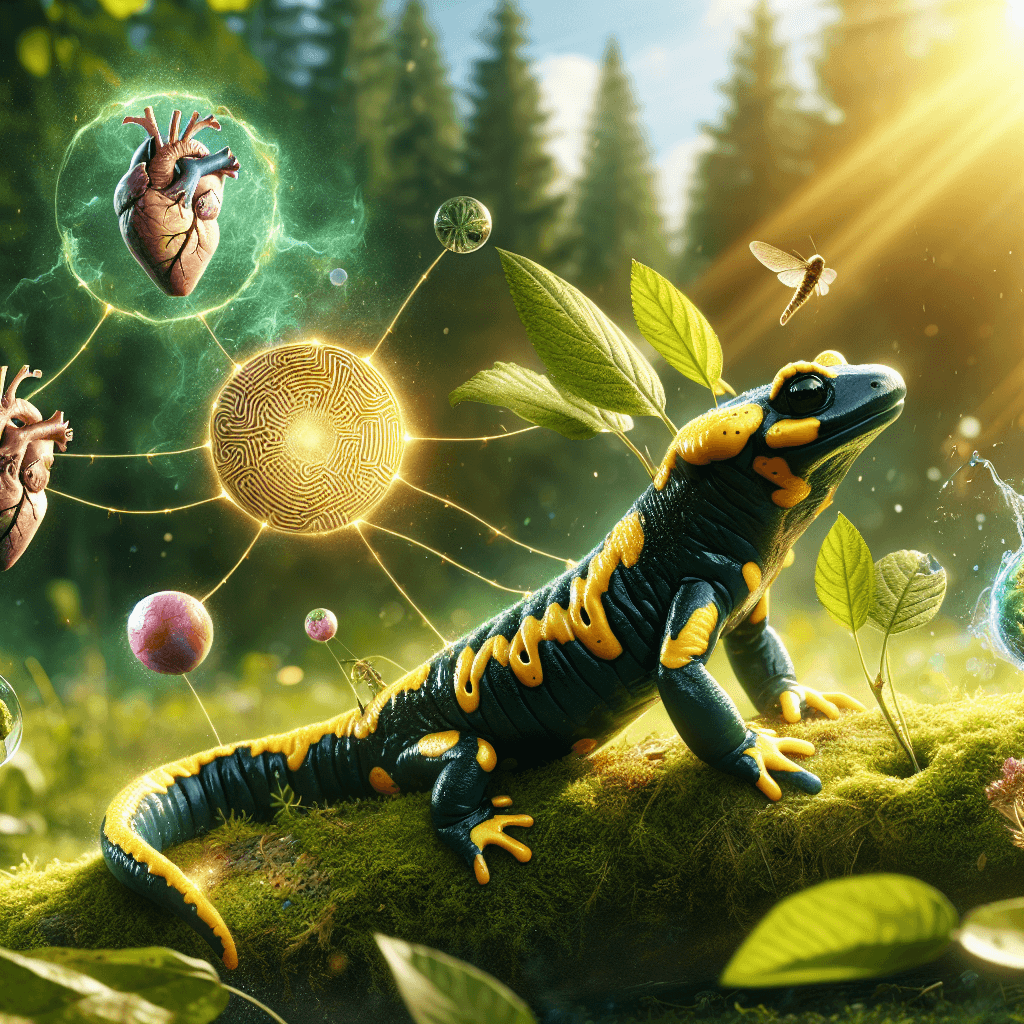How can some salamanders regrow a lost leg, a damaged heart, or even parts of their brain
Imagine treating a lost limb or a damaged heart not as a catastrophe, but as an opportunity to simply rebuild. For some salamanders, this isn't science fiction—it's a biological reality whose secrets could revolutionize human medicine.


Too Long; Didn't Read
TLDR: Salamanders have unique stem cells that gather at a wound. Instead of scarring like humans, these cells form a structure called a blastema, which contains all the instructions to perfectly regrow the lost limb, organ, or brain part from scratch.
Blog Post Title: Unlocking Nature's Secret: How Can Some Salamanders Regrow a Lost Leg, a Damaged Heart, or Even Parts of Their Brain?
Imagine losing a limb and, instead of a scar, watching a perfect new one grow back, complete with bone, muscle, nerves, and skin. For humans, this is the stuff of science fiction. For certain salamanders, like the axolotl, it's a biological reality. These remarkable amphibians are masters of regeneration, capable of rebuilding complex body parts that are lost or damaged. This incredible ability extends far beyond just limbs to include vital organs like the heart, spinal cord, and even portions of the brain. This post will delve into the cellular and molecular secrets behind this biological superpower, exploring the intricate processes that allow salamanders to achieve what seems impossible.
The Blueprint for Rebuilding: Blastema Formation
When a salamander loses a leg, its body doesn't panic and form a scar like a mammal's would. Instead, it initiates a highly organized and precise regenerative process. The first step is rapid wound healing, where skin cells migrate to cover the injury within hours. Beneath this new layer of skin, a miraculous transformation begins.
This is where the magic happens: the formation of a blastema. A blastema is a dome-shaped mass of undifferentiated cells—essentially a cluster of versatile stem-like cells—that accumulates at the site of the injury. What's fascinating is where these cells come from. Instead of relying on a dedicated reserve of stem cells, salamanders use a process called dedifferentiation. Mature cells near the wound, such as muscle, bone, and cartilage cells, revert to a more primitive, embryonic-like state. They shed their specialized identities to become the building blocks for whatever new structure is needed.
The Cellular Masterminds Orchestrating Regeneration
The formation and growth of the blastema are not random; they are meticulously controlled by a team of cellular and molecular directors. Researchers have identified several key players that are essential for successful regeneration:
- Immune Cells (Specifically, Macrophages): Initially, scientists thought macrophages were just the "cleanup crew," clearing away debris from the injury. However, studies have revealed they are critical directors of the entire process. If macrophages are removed, the salamander cannot regenerate its limb; it forms a scar instead. These immune cells release chemical signals that are vital for preventing scar tissue and promoting the tissue remodeling that leads to blastema formation.
- Nerves: Regeneration is impossible without a sufficient nerve supply to the injured area. Nerves growing into the blastema release crucial growth factors that tell the cells to divide and multiply. This neural input is so important that if the major nerve to a limb is cut, the limb will not regrow if amputated.
- Fibroblasts and Positional Memory: Perhaps the most astounding part is how the blastema "knows" what to become. How does it recreate a perfect hand and not just a stump? The answer lies in the connective tissue cells called fibroblasts. These cells retain a form of "positional memory," a molecular blueprint of their location within the limb (e.g., shoulder, elbow, or wrist). This information guides the blastema cells to rebuild the missing structures with breathtaking accuracy, ensuring everything is in its proper place.
Beyond Limbs: The Ultimate Healers
The salamander's regenerative prowess isn't limited to its limbs. This ability extends to internal organs in a way that is almost unimaginable for mammals.
- Heart Repair: After a heart attack, a human heart develops scar tissue, which reduces its function. A salamander, however, can have a significant portion of its heart ventricle removed and will regenerate the missing heart muscle, restoring full function without scarring.
- Brain and Spinal Cord: When a mammal suffers a spinal cord injury, glial cells rush to the site and form a scar that prevents nerve axons from regrowing, leading to permanent paralysis. Salamanders avoid this. They can regenerate damaged spinal cord tissue and even portions of their forebrain, restoring lost neural connections and recovering function.
Conclusion: Lessons from a Master Regenerator
The ability of some salamanders to regrow lost legs, repair damaged hearts, and even rebuild parts of their brains is a marvel of the natural world. This process hinges on a unique combination of factors: the formation of a blastema through cellular dedifferentiation, the essential signaling from immune cells and nerves, and an incredible positional memory system that ensures a perfect replica is built. While we are a long way from being able to regrow our own limbs, studying these amphibians provides a vital roadmap for the future of regenerative medicine. By uncovering the secrets of the salamander, scientists hope to one day develop therapies that can help humans heal better, reduce scarring, and perhaps even repair organs once thought to be permanently damaged.


